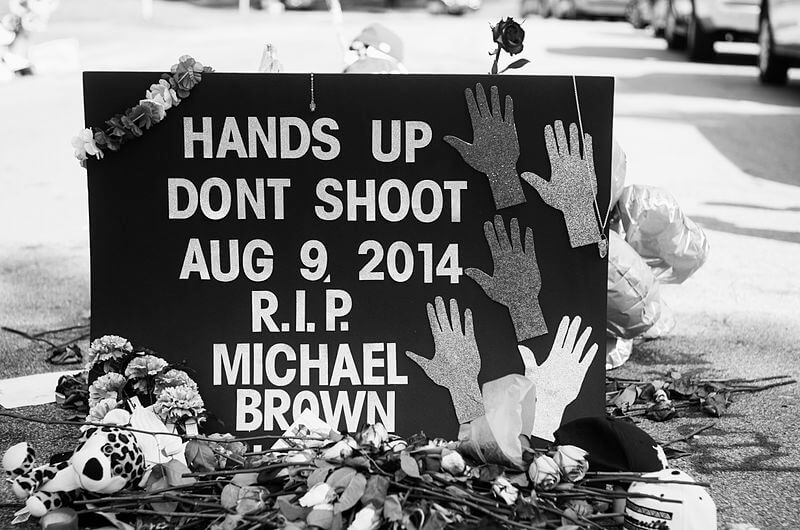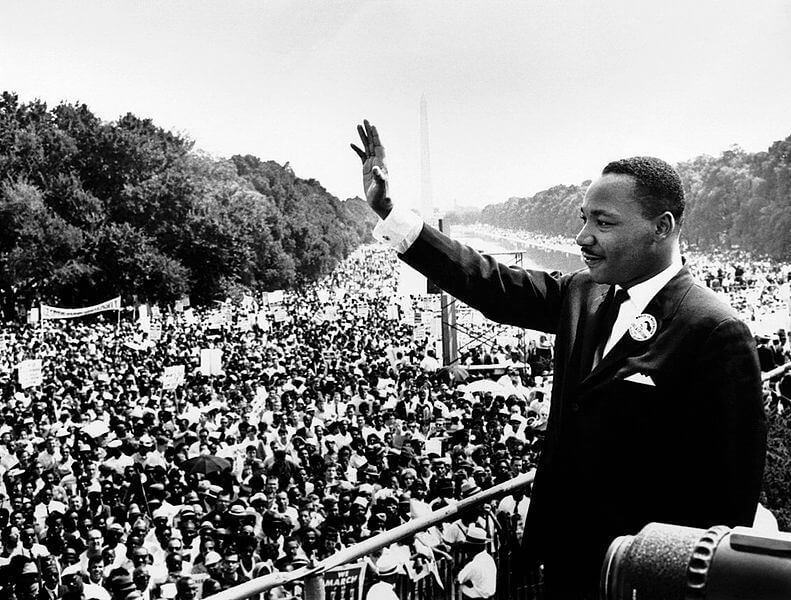
MLK addresses the crowds. Image: US Department of Defense.
There can be no conversation about Ava DuVernay’s electric film, Selma, without referring to what is happening now around the world and particularly in the United States.
Selma is a technically ambitious and charged biopic, but its most important feature is the multiple layers it adds to Martin Luther King Jr’s struggle to ensure that African Americans attained voting rights.
Essentially, it is a film about power, the men in power, the people seeking power and the path upon which they clash. At its core, the leader of the movement against the powerful is the iconic (and powerful) Martin Luther King Jr, who advocated for non-violent resistance and worked within the prescribed systems and institutions to achieve change.
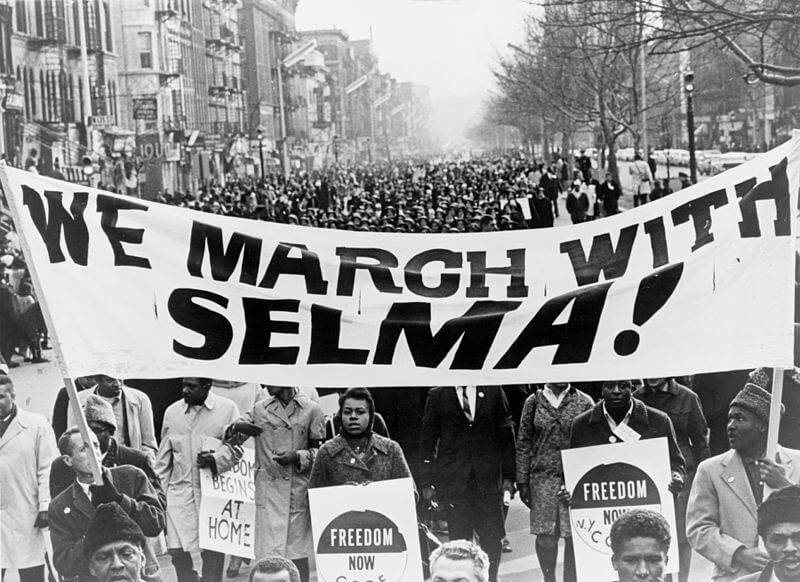
Marching for a cause in Harlem, New York City. Image: Stanley Wolfson.
The film charts King’s time organising and implementing his strategy – otherwise known as the Selma Voting Rights movement – to pressure the then-President Lyndon B. Johnson into enacting legislation that would protect the African American right to vote, which had been denied as a result of bureaucracy and racist red tape.
Indeed the motivation behind the civil rights campaign was that representation in government would enable the African American community to emerge from the centuries of oppression and poverty it had endured; that is, if African Americans had the ability to vote then they would have the ability to have their voices heard and take their place at the table.
The recent parallels between the conditions that drove the civil rights movement of the ’60s and the present circumstances of African Americans in the United States are numerous and far reaching, not least of all in light of the recent unrest in Ferguson, Missouri, sparked by the death of Michael Brown, a young African American, who was shot during an altercation with a white police officer in August last year.
It is an awkward truth to consider how little has changed since the ’60s, especially since Selma was considered merely a step in a greater campaign that sought to relieve the United States of the injustices it levelled at its own people. The film scenes depicting the death of young Jimmie Lee Jackson, who was shot in 1965 by police in a cafe after attempting to escape an ambush on protestors, are heartbreaking and all too familiar. Aside from Brown, there have been numerous incidents of police brutality on unarmed black men in the past year alone with data showing that these cases are not anomalous.
Despite the lack of progression over the years, the film carries the message of non-violent resistance and advocacy as the shining hope for the African American community. Given the journey that the civil rights movement took after the death of King, it is disappointing, therefore, to note the dismissiveness with which Malcolm X and any such dissident was met throughout the film. It is on only this point that I can level any criticism at Selma.
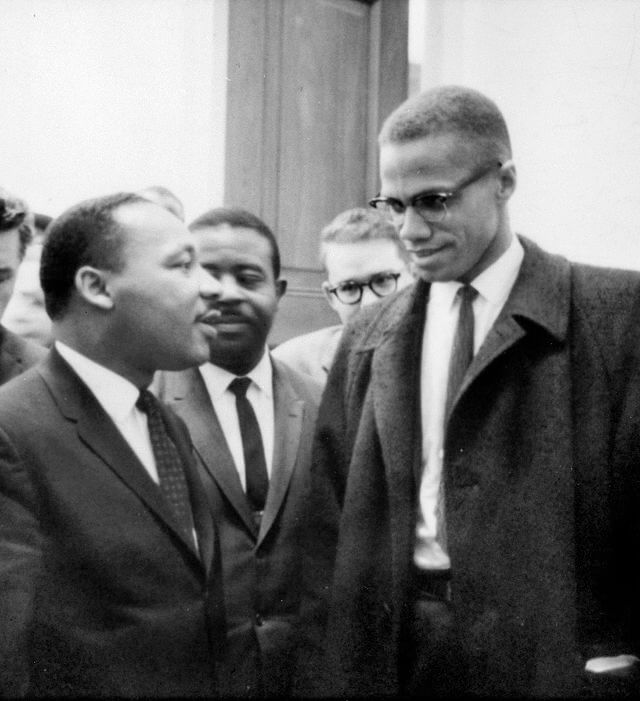
Malcolm X and MLK’s only meeting. By: Marion Trikosko.
King called for the classic discourse within democratic advocacy, wherein the best way for the black community to move forward is to shift the balance of power by using democratic means rather than investing in physically fighting those within the wider community who uphold injustice. The film projected that these strategies are the best – perhaps even the only – ways to fight oppression and injustice.
The alternative was barely considered.
In fact, Malcolm X appeared in only one scene and was referred to as a “radical” throughout the film, with added snap in case viewers did not feel the disapproval of his ideologies reverberating through the images.
This isn’t necessarily to say that there is no value to the path that King trod or the changes for which he fought. To the contrary, his achievements are so numerous they almost need not be mentioned, and I am in no position to pass judgement on the enormity of his accomplishments.
It is important, however, to place the film within its contemporary context.
Nevertheless, Selma does do an exemplary job of painting a picture of the entire civil rights movement through this one epic battle in Alabama and the immense consequences that it produced. The film also takes great effort in painstakingly constructing the structures within which King and his movement operated, and of the obstacles they faced, including convincing President Johnson that the marches in Selma are of importance.
What emerges is a fascinating representation of politics and social justice both working hand in hand for each other and at odds. The President is seen to be frustrated with the fact that the protests made the front page of the newspaper – not because he is saddened by the violence they faced, but due to a fear of public backlash over his lack of action on the matter.
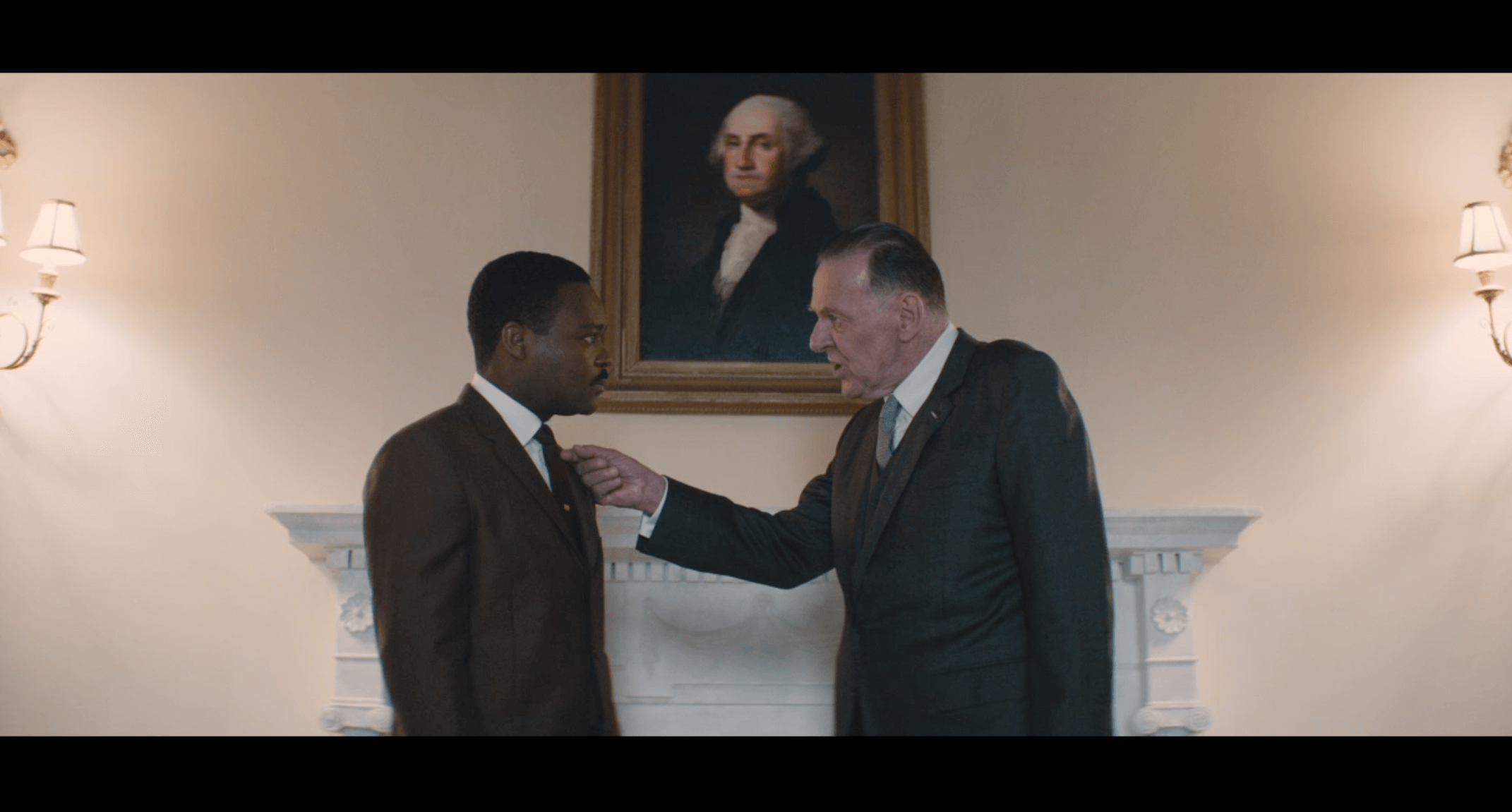 The marches in Selma, thus, became a public relations problem for President Johnson, forcing his hand in the exact manner that was planned by King. The resultant signing of the Voting Rights Act in 1965 was a momentous occasion in United States history and a shining example of what is achievable when a path of engagement and non-violent resistance is embarked upon.
The marches in Selma, thus, became a public relations problem for President Johnson, forcing his hand in the exact manner that was planned by King. The resultant signing of the Voting Rights Act in 1965 was a momentous occasion in United States history and a shining example of what is achievable when a path of engagement and non-violent resistance is embarked upon.
However, the signing of the Act also demonstrates the level of manipulation that is needed in order to create change. It demonstrates that the men who wielded power were not swayed by the injustices enacted on their people, but rather by polling numbers; that is, they were swayed more by public opinion of their efforts than of the genuine need to relieve a people of cruelty.
The movement, like the film, is thus entrenched in the reality it faces, such that legitimate and conceivable change was achievable only via the recognition of context and structures. Indeed, at the time, it was more likely for African Americans to achieve equal voting opportunities than they were to overturn an entire system based on racism.
The film only briefly dwells upon this point as King reflects on his efforts after he is detained for a peaceful protest. Speaking with his cellmate, he questions his efforts to bring justice to an inherently unjust system. His friend’s response is telling. “We build the path as we can, rock by rock.”
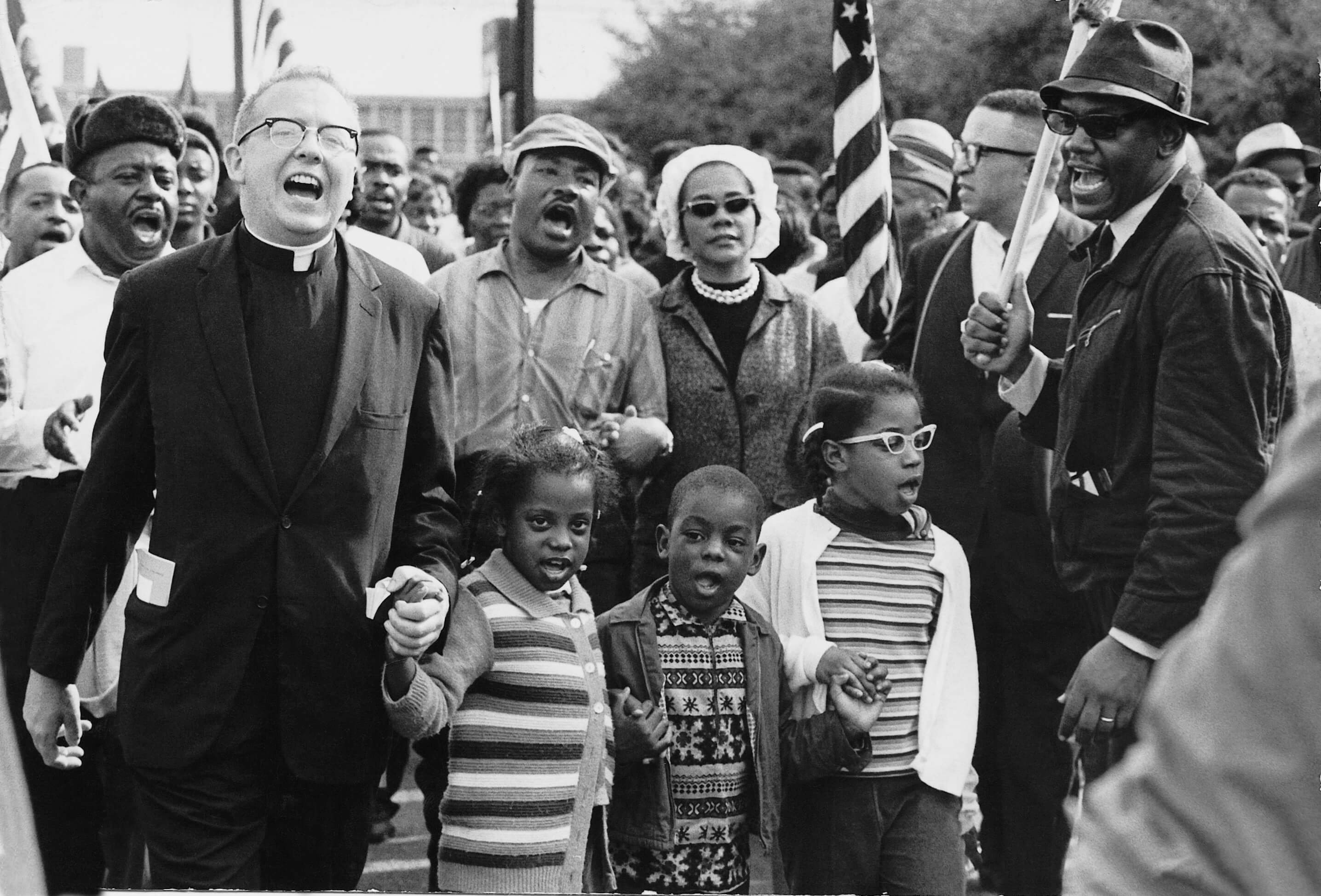
MLK leads the Selma to Montgomery march. Image: Abernathy Family
This scene is important – one of the few where the powerful gravitas of Martin Luther King Jr is dropped for the very human feelings of doubt and fear – and it characterises the intense study of power and injustice that is explored.
The scene suggests that even though King could stand up to presidents and White Supremacists, he was still plagued by a fear of the effects of the path he had chosen and was wracked by guilt over its consequences.
It is here that the film shines the brightest; not in the intriguing political and social commentary that underpins its story, but in bringing humanity to the colossal, bringing context to the iconic and in bringing personality to the images we’ve seen so often.
Commandingly portrayed by David Oyelowo, King is the anchor and the catalyst here and is a worthy centre to a pivotal moment in United States history. However, this results in there being less commentary in the film on the wider impacts of his movement, and more so on the struggles he faced. Selma’s stark portrayal of the violence and hatred he faced is unrelenting, only adding to the significance of his non-violence stance.
Beyond a historical biopic, however, Selma stands as a film presenting a deeply political opinion on the movement and the context it faced. It is there that the layers must be peeled back and the outlook judged, not just in the context of its time, but in the consequences it has for us in the here and now.
Selma is now screening in cinemas across Australia.

